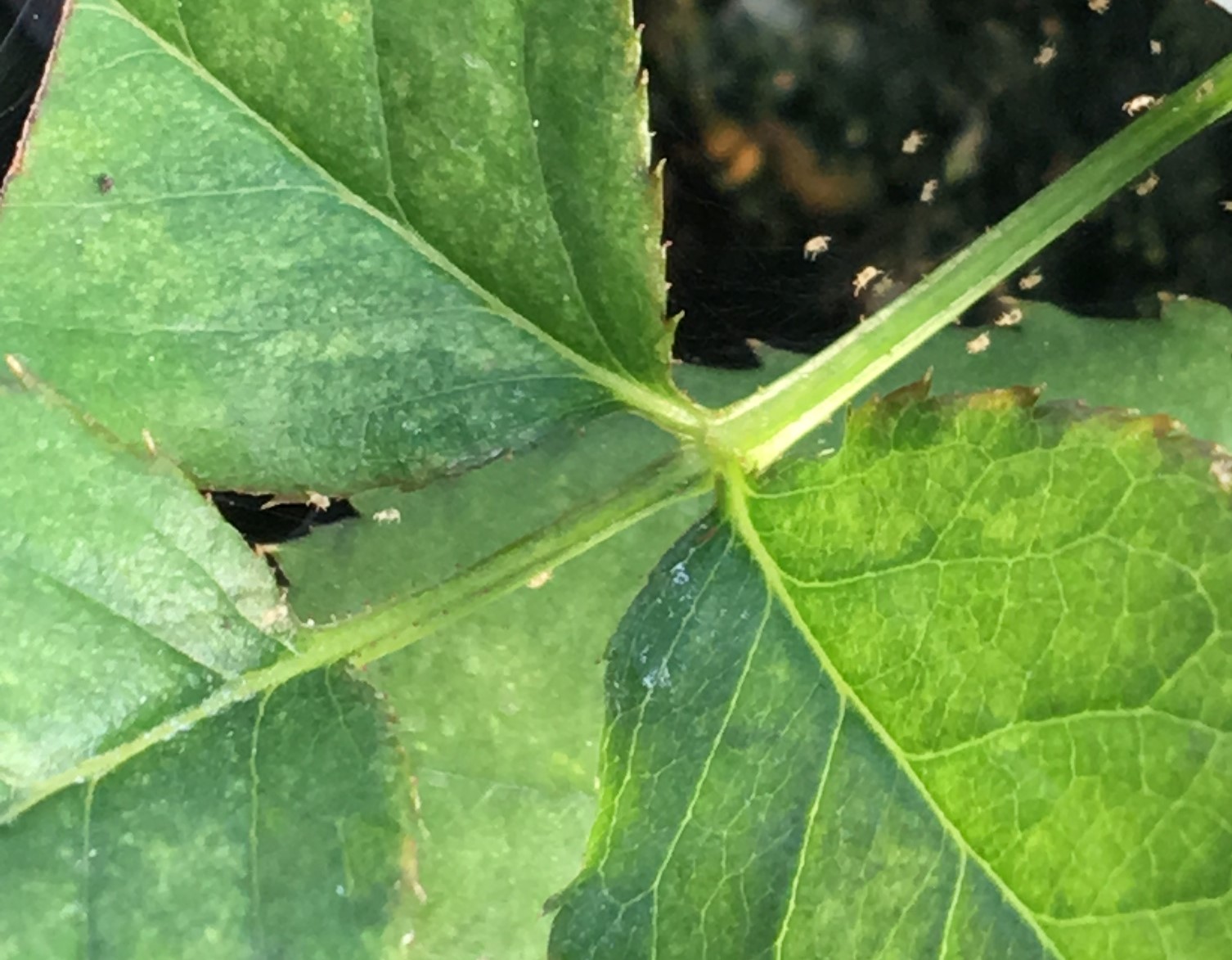Please click here to access the main AHDB website and other sectors.
- Home
- Knowledge library
- The biology and control of mites in ornamentals
The biology and control of mites in ornamentals
Follow the advice in these pages to achieve effective control of mites in hardy nursery stock, bedding plants and pot plants.
Find out how to control mites in ornamental crops
A range of mite species cause damage to ornamental crops; many species are native, but the number found in the UK has increased over the years as a result of the international nature of plant trade.
Within these pages, the following species will be covered:
- Spider mites, including: two-spotted spider mite, bryobia mites, carmine spider mite, citrus red mite, conifer spinning mite, fruit tree red spider mite and Lewis mite
- Eriophyid mites, including: pear leaf blister mite and fuchsia gall mite
- Tarsonemid mites, including: broad mite, cyclamen mite and bulb scale mite
- Tyrophagus mites
The two-spotted spider mite continues to be the most important and widespread species. This mite can damage outdoor-grown crops, but it tends to be a more serious pest of protected ornamental crops. The other mite species are less widespread but can be problematic on specific crops.
Guidance is provided on the biology, recognition and control of these pests through an integrated approach of reliable crop monitoring, cultural, biological and chemical control measures.
Action points
- Ensure staff members have access to a good-quality x10 or, preferably, x20 magnification hand lens, as this is vital to aid correct identification
- Be aware of the range of symptoms that the different mite species cause and ensure that nursery staff can recognise less common symptoms, such as those caused by tarsonemid mites
- Check incoming plant material for any signs of mites or associated plant damage
- Keep production areas free of weeds, as a number, such as Salix or willowherb, can act as alternative hosts
- Monitor crops weekly from spring until the end of the growing season and note any ‘hot spots’ of mite damage. Work on these areas last, as mites, such as the
two-spotted spider and tarsonemid mite, can be unwittingly spread by workers - Carefully dispose of any crop debris, unmarketable plants and weeds
- Base the IPM programme on cultural control methods and on releases of biological control agents, supplemented by plant protection products, as necessary. Undertake programme modifications based on the experiences of the previous season
- Provide the optimum environmental conditions for the biological agents applied, or match the agent used to the prevailing conditions
- Check the IPM compatibility of any plant protection products before selection and use. Follow any resistance management guidelines on the label or Extension of Authorisation for Minor Use (EAMU), including use of the recommended rate, number of applications, interval between applications and alternation of products from different Insecticide Resistance Action Committee (IRAC) groups to minimise the risk of developing resistance
- Ensure two-spotted spider mite populations are controlled before the adults enter diapause to minimise any overwintering populations
Spider mites
How to identify a number of spider mite pest species and their symptoms on host plants and gain an appreciation of pest biology to aid in the development of effective control strategies. This section includes details of the key spider mite pest, two-spotted spider mite, and other spider mites, including: bryobia mites, carmine spider mite, citrus red mite, conifer spinning mite, fruit tree red spider mite and Lewis mite.
Learn to identify the key spider mite species, their host plants and biology
Eriophyid mites
How to identify eriophyid pest species and their symptoms on host plants and gain an appreciation of pest biology to aid in the development of effective control strategies. This section includes details of the fuchsia gall mite (Aculops fuchsiae) and pear leaf blister mite (Eriophyes pyri).
Learn to identify the key eriophyid mite species, their host plants and biology
Tarsonemid mites
How to identify tarsonemid pest species and their symptoms on host plants and gain an appreciation of pest biology to aid in the development of effective control strategies. This section includes details of the broad mite (Polyphagotarsonemus latus), bulb scale mite (Steneotarsonemus laticeps) and cyclamen mite (Phytonemus pallidus).
Learn to identify the key tarsonemid species, their host plants and biology
Tyrophagus mites
How to identify tyrophagus pest species and their symptoms on host plants and gain an appreciation of pest biology to aid in the development of effective control strategies.
Learn to identify the pest tyrophagus species, their host plants and biology
Integrated pest management of mites
A combination of cultural, biological and conventional chemical control measures will provide the best approach for controlling mite infestations, as part of an integrated pest management programme.
Useful links
Read the AHDB Bedding and Pot Plants and Hardy Nursery Stock Crop Walkers’ Guides for more information on mite pests of ornamental plants.
Bedding and pot plants Crop Walkers' Guide
Hardy Nursery Stock Crop Walkers’ Guide
Authors
Authors – Elysia Bartel and Jude Bennison, ADAS Horticulture.
Original author (08/05 ‘The biology and control of two-spotted spider mite in nursery stock’ and 12/09 ‘The biology and control of mites in pot and bedding plants’) – John Buxton, ADAS.
Got a question? Ask a member of the team:
Web page content correct as of June 2021.
Two-spotted spider mite on pot rose leaf, along with fine webbing produced by the mites

Image © AHDB.

